What type of account should a beginner open for day trading? A beginner should open a demo account or a cash account first to learn, then consider a margin account only after mastering risk, rules and platform execution.
This guide is written for non‑US residents who are exploring day trading for the first time and need a clear, gentle route into live markets. Day trading demands quick decision‑making, discipline and the right account type from the start. For many newcomers the safest path is to practise on a demo account, move to a cash account to trade small with real money, and only later use a margin account when the trader fully understands leverage, settlement and any local rules. Examples here focus on platforms commonly available outside the U.S., such as Pocket Option, Quotex and Olymp Trade. Practical links are included to answer common questions about demo trading, margin use, small accounts and alternatives like prop firms. A fictional novice, Ana — a careful new trader in Lisbon — will illustrate steps: she practices, keeps strict risk rules and scales up gradually. The goal: protect capital while building skill and confidence.
Which account type is best for beginner day traders: demo, cash or margin?
Beginners should prioritise learning over chasing profits. Each account type serves a different learning goal and risk profile.
- Demo account — practice execution, test strategies, learn platform features without risk.
- Cash account — trade real money, avoids margin and many leverage rules; suitable for gradual, low‑risk live trading.
- Margin account — unlocks buying power and instant settlement for fast intraday moves, but adds leverage risk and regulatory obligations.
| Account type | Best for | Main risk or limit | When to use |
|---|---|---|---|
| Demo account | Learning platform & strategy testing | No real‑money discipline; market feel differs | First weeks or months of practice |
| Cash account | Low‑risk live experience | Settlement delays; limited intraday buying power | After demo, when ready to risk small capital |
| Margin account | Active intraday trading with leverage | Amplified losses; margin calls | Only after consistent demo/cash performance and understanding rules |
Key practical links for further reading: start with demo accounts (Can I start day trading with demo accounts?) and learn how cash vs margin behaves (Can I day trade on a cash account with no leverage?). Those pages help decide the first live step.
Insight: Start where mistakes cost the least — skill compounds faster than capital if mistakes are contained.
How to use demo accounts and when to switch to live cash or margin trading
Demo accounts teach execution speed, order types and emotional response to wins and losses. They do not teach true capital risk management — for that, a cash account is the bridge.
- Run a demo for predefined goals: 90 days testing one strategy, track win rate and risk/reward.
- When consistently profitable on demo, open a small cash account and risk only what you can afford to lose.
- Only consider a margin account after positive, documented live performance and knowing margin rules for your jurisdiction.
| Step | Action | Measure |
|---|---|---|
| Practice | Use demo to learn platform, orders and a single strategy | Consistent simulated edge over 50–100 trades |
| Small live test | Open a cash account and trade with strict sizing | Limited drawdown (e.g., max 5% of account) |
| Scale | Consider margin after several months of documented live success | Clear risk controls and understanding of margin costs |
Useful links: understand margin needs (Do I need a margin account for day trading?) and learn whether to use borrowed money (Can I start day trading with borrowed money?).
Example: Ana kept a trading journal while on demo — entries showed poor exits at first. After fixing one rule and proving it in demo, she moved to a small cash account and preserved capital. Insight: a documented, patient progression protects both psychology and capital.
Choosing a broker outside the U.S.: focus on Pocket Option, Quotex and Olymp Trade
For non‑US residents, these brokers often provide demo accounts, low minimum deposits and beginner‑friendly interfaces. Choose one that offers reliable execution, clear fees and solid educational tools.
- Pocket Option — known for intuitive interfaces and demo accounts to practise strategy execution.
- Quotex — useful for beginners thanks to simple trade setup and practice modes.
- Olymp Trade — strong learning sections and step‑by‑step tutorials for newcomers.
| Broker | Demo available | Minimum deposit | Good for |
|---|---|---|---|
| Pocket Option | Yes | Low | Fast demo-to-live practice |
| Quotex | Yes | Low | Simple trade setup for beginners |
| Olymp Trade | Yes | Low | Structured education for new traders |
Other practical considerations and links:
- Can you grow a small account? Read guidance on scaling from tiny starting capital: Can I start day trading with a small account and grow it?
- Want leverage as a beginner? Learn the trade‑offs: Can I day trade with leverage as a beginner?
- Considering prop firms? Explore that path here: Can I day trade with a prop firm account?
Practical tip: Compare demo performance across two of these platforms before funding a live account. The one that feels fastest and least distracting is the place to begin. Insight: speed of execution and clarity of fees matter more than fancy extras for a beginner.
Common questions beginners ask
Which account helps learn execution fastest?
Demo accounts replicate order entry, stop placement and platform quirks without financial risk. They accelerate muscle memory and allow strategy testing before any real losses.
Can a cash account be used for day trading?
Yes — a cash account lets beginners trade real money while avoiding margin risks. Be mindful of settlement rules; refer to guidance on cash‑account day trading: Can I start day trading with a cash account instead of margin?.
Is it safe to use borrowed money or a credit card to fund trading?
Using borrowed funds generally amplifies risk. Carefully read consequences on starting with borrowed capital: Can I start day trading with borrowed money? and avoid credit‑card funding unless fully understood: Can I use a credit card to fund a day trading account?.
Can multiple brokers be used to bypass day‑trading rules?
Using multiple brokers to evade regulatory rules is not a recommended strategy. Understand local and platform rules first: Can I day trade with multiple brokers to bypass the PDT rule?.
Where to learn more and take the next step?
Start with demo practice, document every trade, and read focused guides about margin and account rules: Do I need a margin account for day trading?. If exploring cash accounts without leverage, see: Can I day trade on a cash account with no leverage?.
Final insight: a disciplined ladder — demo → cash → margin — preserves capital and builds the psychological resilience essential for any sustainable trading career.
With over a decade of experience navigating global financial markets, I specialize in identifying trends and managing risk as a professional trader. My passion for economics drives my daily commitment to staying ahead in this fast-paced industry. Outside of the markets, I enjoy exploring technology like cryptocurrencies and new investment strategies.

